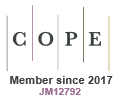Identifiying the molecular mechanisms involved in tolerating phosphorus deficiency and improving phosphorus utilisation efficiency is critical in maize (Zea mays) breeding programs. This study evaluated the genetic basis of phosphorus uptake in 93 maize genotypes using a maize 600K Single Nucleotide Polymorphism (SNP) array followed by gene network analysis. We showed genetic variability in phosphorus uptake in the evaluated maize germplasm and identified the genes that could be used in future breeding programs to develop genotypes that more phosphorus-efficient.

Crop & Pasture Science
Volume 76 Number 4 2025
Wheat farmers are increasingly leaving more stubble standing after harvest, which could affect the spread of plant diseases such Fusarium crown rot (FCR). A new study found that taller cereal stubble allowed the Fusarium fungus to grow further after harvest, potentially increasing disease risk for future crops. Although stubble height did not significantly affect disease in the short term, the research offered valuable insights into how stubble management could help control FCR in the future.
CP24365 Abstract | CP24365 Full Text | CP24365PDF (1.5 MB) | CP24365Supplementary Material (1.9 MB) Open Access Article
Enteric methane (CH4) emission from livestock accounts for 71% of greenhouse gas emissions from Australian agriculture. A range of pasture mixes was evaluated for their compatibility, productivity, feed quality and CH4 emission reduction potential. Pasture species higher in saponins and condensed tannins have great potential to reduce enteric CH4 emissions. Pasture mixes containing plantain and/or biserrula exhibited potential to reduce CH4 emissions, but poor persistence may limit their adoption. Suitable pasture mixes can be deployed to reduce CH4 emission intensity, allowing producers opportunity to decrease their greenhouse gas liability in emission reduction schemes.
This article belongs to the collection: Australian Grasslands Symposium 2025 “Seeds of Change”.
CP24356 Abstract | CP24356 Full Text | CP24356PDF (1 MB) | CP24356Supplementary Material (963 KB) Open Access Article
Brazil is the largest producer of sugarcane (Saccharum officinarum) in the world, which produces sugar, ethanol and energy (biomass). Both climate efficiency and agricultural efficiency (best management practices) are obtained from knowledge of edaphoclimatic variability, both in space (different regions) and in time (phenological phases and cycles). Based on the results of this work, it was possible to identify climatic and soil groups with the best characteristics to obtain higher sugarcane yields.




